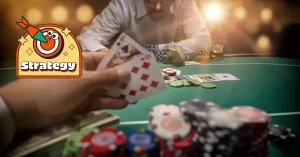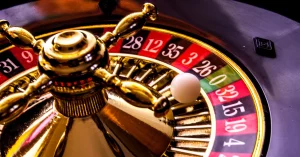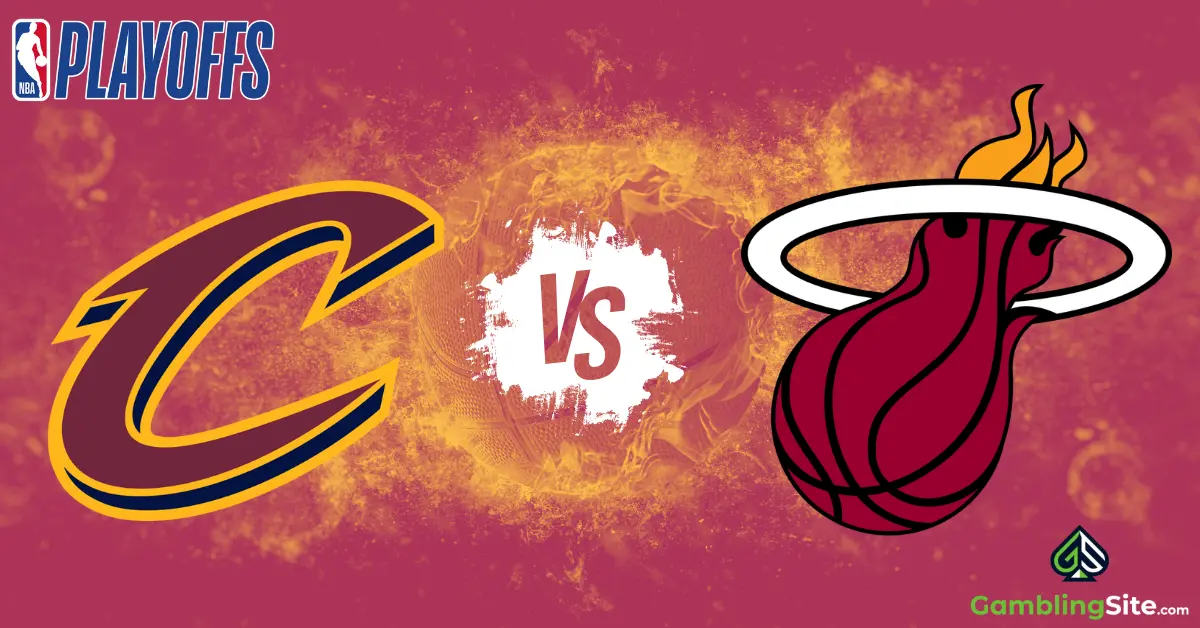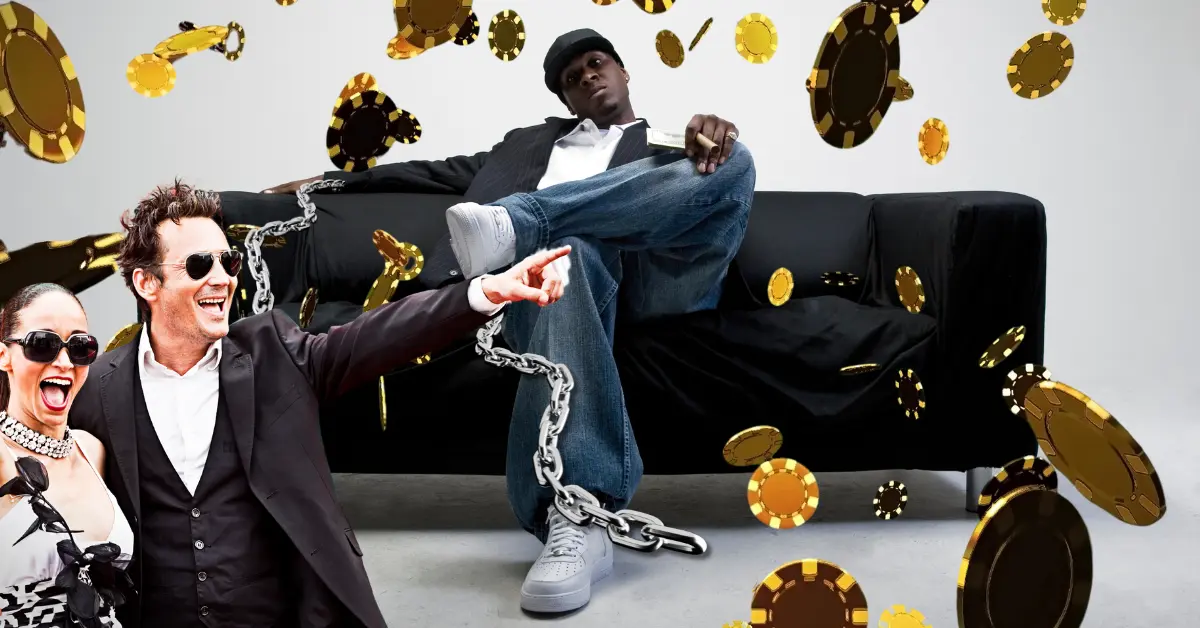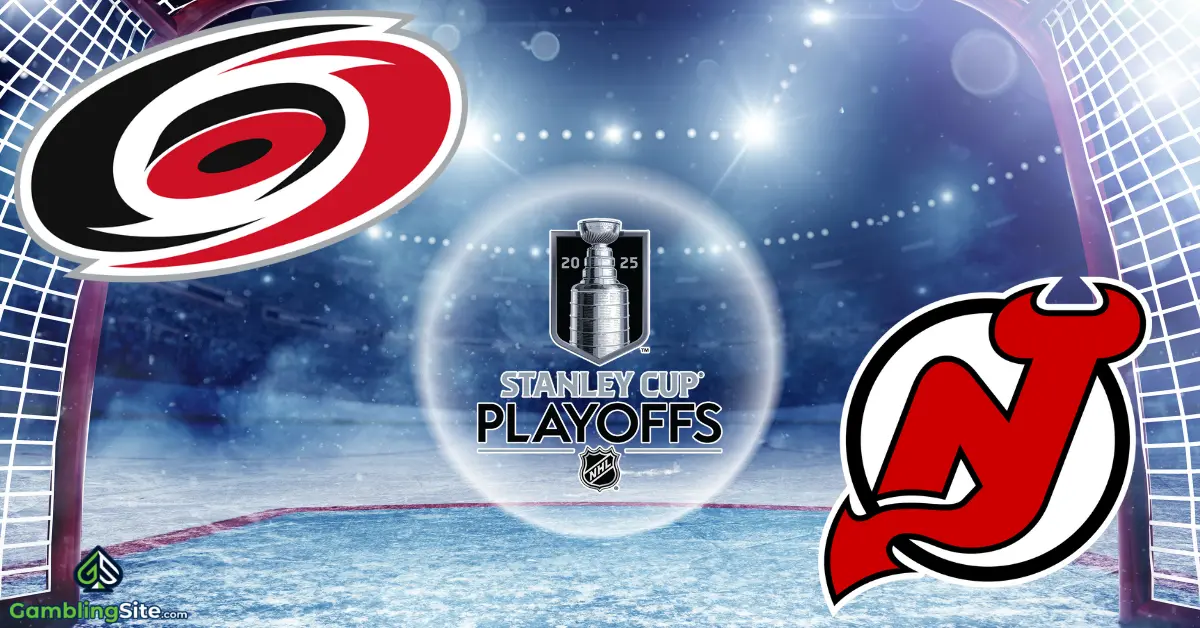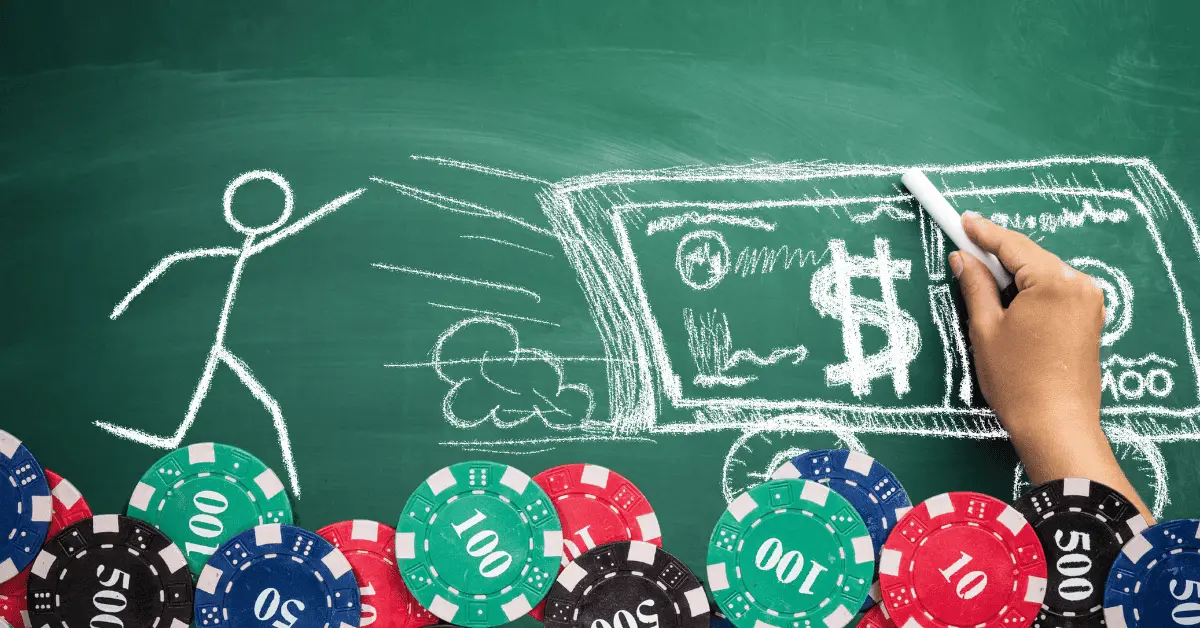The Mathematics of Blackjack: How Card Counting Works
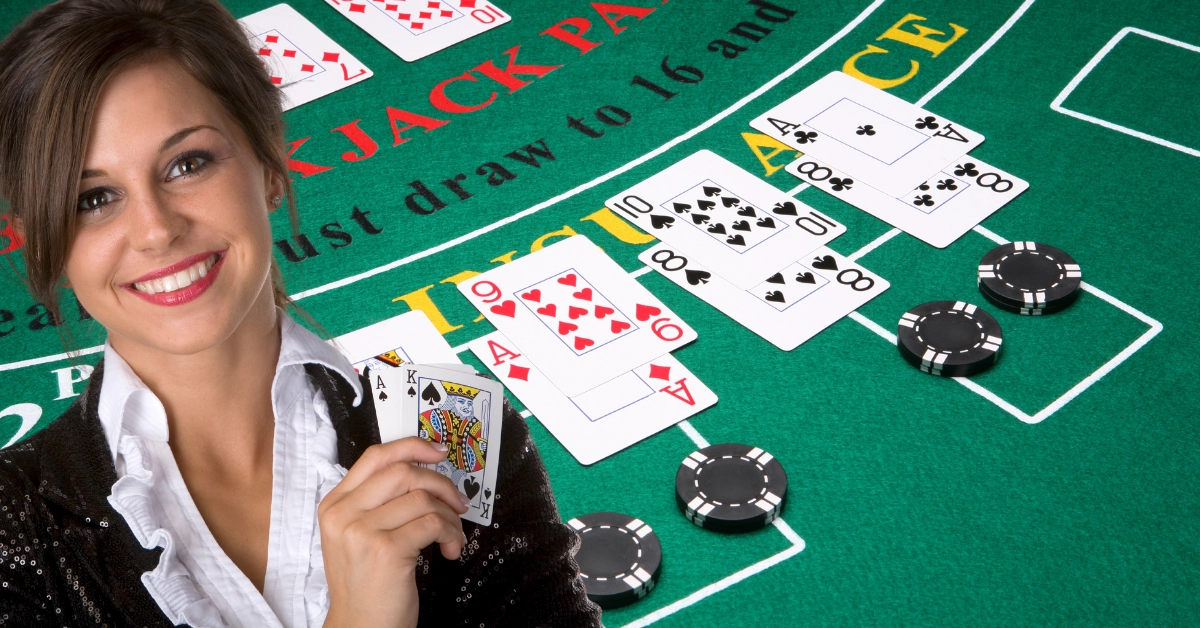
Blackjack is one of the most popular games you’ll find at a land casino or in online Blackjack rooms. It has simple rules, a speedy rate of play, and several strategic approaches that make it fun and interesting to play! While games like slot machines, bingo, or Keno offer you very little control over dictating the final outcome, Blackjack is a dynamic table game where you can use a basic strategy to drive the house edge down and swing the odds in your favor.
In this article, we will explore the mathematical principles behind card counting in Blackjack. This strategy has helped gamblers determine if the player or the dealer has an advantage in the next hand. By understanding the mathematics of card counting, players can gain an edge over the house and make more informed decisions at the table. We’ll discuss the Hi-Lo System and some other advanced card counting techniques—learn how the math behind card counting can improve your approach to Blackjack and place you on the winning side of the curve more often!
The Basics of Blackjack
Blackjack, sometimes called 21, is one of the most popular table games played at online casinos and brick-and-mortar establishments. It has become a favorite of many gamblers because it’s easy to learn and can be super exciting to play.
We’ll go over the basics of the game, like the objective, card values and scoring, and the house edge factor, to give you an idea of how this table game is played and how it can be beneficial if you want to be on the winning side of the curve more often.
The Objective of the Game
Blackjack is a game in which all players compete against the dealer. The objective is to get closer to 21 than the dealer without going over. Players can request a new card from the dealer as often as they’d like to try to get as close to 21 as possible, while the dealer only works off of two cards, one face up and one face down (the hole card).
There are three ways that a player can beat the dealer in Blackjack:
- Drawing a hand value that is higher than the dealer’s hand value
- Drawing a hand value of 21 on your first two cards (Ace + 10 or face card) and the dealer doesn’t
- By the dealer drawing a hand value that goes over 21
There are two ways for players to lose against the dealer:
- Your hand value exceeds 21
- The dealer has a hand value closer to 21 than your final hand
Card Values and Scoring
The card values and scoring are pretty simple in the game of Blackjack.
- All number cards are played at face value.
- Jacks, Queens, and Kings count as 10.
- An Ace can be played as a 1 or an 11.
If you’re dealt a hand of an Ace with any face card, you’ve got a Blackjack, and you’ve likely won against the dealer. Depending on which type of Blackjack you’re playing, Blackjack is paid either 6 to 5 or 3 to 2.
Dealer’s Up Card and Down Card
The dealer gets two cards, one face up and one face down. Throughout the hand, the dealer only knows the face-up card; they cannot see the face-down card (the hole card). The face-up card is there so gamblers can decide whether to “stand” or “hit.”
After the dealer looks at their face-down card, they become aware of their total hand value. If the total is 16 or under, they must take a card. They must take cards until the total is 17 or more. Once the dealer reaches 17 or higher, they must “stand.”
Hit and Stand
Each player gets two cards that are dealt face down. Players can look at their cards, so the dealer has no idea what they are. Once you’ve gotten your two cards, you can “hit” or “stand.”
- If you “hit,” you get another card from the dealer. You communicate this to the dealer through hand gestures like tapping or scratching the table with your finger. You can “hit” as many times as you’d like until you think you’re as close to 21 as possible or if you “bust,” which means giving over 21.
- If you “stand,” you feel comfortable with the hand you’ve been dealt. You’ll definitely want to stand if you have an Ace and a 10 or face card. This means you’ve hit a “Blackjack,” and you’ve likely won over the dealer. The general rule of thumb using a basic strategy is to stand on a hand that’s 17 or higher.
Double Down
Doubling down is a common Blackjack strategy in which you place an additional bet equal to your original ante. This bet equals your initial wager after being dealt the first two cards. Doubling down is done in exchange for one card, but it results in the player being unable to “hit” for the rest of the hand. Doubling down increases your payout potential if you do it right, using a basic strategy.
PLEASE NOTE:You should only employ the double-down if your total hand is equal to 9, 10, or 11 without an Ace in play. If you have an Ace in your hand, then you should only do so if your hand total is 16, 17, or 18. It’s also a good rule of thumb to double down on a pair of 5s (avoid pair splitting a pair of 5s).
Split
Splitting hands is another Blackjack strategy where you can create two separate hands if the two cards you’re holding are the same number (two 6s, two 3s, etc.) It can be done for two cards of the same numerical value, like 10s and a Queen, a Queen and a Jack, a Jack and a King, etc. After splitting the two cards into two hands, you place your original bet with one hand while placing an equal bet with the other.
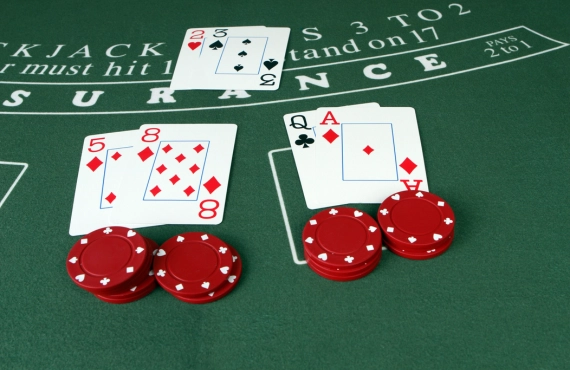
The splitting strategy is essentially doubling your overall bet. If the new hand becomes a new pair with an equal numerical value, the player can split this hand and create a third bet, effectively tripling their wager.
Can You “Hit” or Double Down on a Split?
Players can “hit” or double down on a split hand, except when splitting two Aces. Splits are rare in Blackjack. There’s only a 0.5% chance of getting a pair of cards numerically valued from Ace to 9, and there’s only a 9.4% chance of getting a pair of cards numerically valued from 10 to King.
When Do You Split Hands?
The time to split your hands is if you have a pair of 8s or a pair of Aces.
- If you’re dealt a pair of Aces and split the hand, you have two clear chances of getting Blackjack quickly. Players have a 30.4% chance of their hand starting on an Ace and getting Blackjack. If you up this to two hands after a split, the probability climbs to 51.6%.
- If you get a pair of 8s, your total hand value is 16, which is one below the 17 value where the dealer is required to “stand.” 16 is the weakest hand in Blackjack, not only because it falls slightly short of the mark where the dealer is required to finish, but because there’s a good chance of the player going bust if they “hit.” 16 is already close to 21.
- If you get a pair of 9s, you should split the hand in every circumstance unless the dealer has a 7, a card worth 10, or an Ace. The chances are good that their next card will be worth 10, meaning that they will end on at least a hand of 17 or higher, if not 20 or Blackjack. Feel free to split if the dealer has anything 2-6 or 8-9, and you have a pair of 9s!
When Not to Split Your Hand
- Never split a pair of 10s. 20 is a strong hand to be dealt immediately, and the dealer has only a 12.2% chance of beating that value. If you split a pair of 10s, you’re likely to wind up with two hands that are less than 20.
- Don’t split a pair of 5s—the best approach here is to double down. If the dealer shows a 10 or an Ace as their face-up card, it’s best to “hit.” Never split a pair of 5s!
- Don’t split pairs of 2s, 3s, or 7s if the dealer’s face-up card is an 8 or higher.
- Don’t split pairs of 4s or 6s if the dealer’s face-up card is a 7 or higher.
- Don’t split pairs of 4s if the dealer’s face-up card is beneath 5.
House Edge
The house edge for an average game of Blackjack stands at 2%. It’s the profit the casino expects to make on each game iteration. The house edge is built into the game to ensure that the casino can make a basic profit while still being able to operate and offer games to its customers.
In the game of Blackjack specifically, the dealer has an edge over the players because the players are the first to act. After the cards are dealt, the player makes the first move, which automatically puts them at a significant disadvantage. However, there are several strategies for beating the house, including doubling down, splitting hands, surrendering hands, and knowing when to strategically “hit” or “stand,” meaning that 2% of houses edge down into the realms of 1%.
Who Gets the Edge in Each Scenario?
Using a Blackjack strategy is so important because there are several ways that a player can increase their likelihood of winning over the house. Remember that the house has two basic rules: they must “hit” on 16 or lower and “stand” on 17 or higher.
- The house has the edge when the player acts first, and the dealer acts last.
- The player has the edge when the dealer gets even money on Blackjack, and the player gets 3:2.
- The edge goes to the player when the player can hit, stand, double down, split, or take insurance, while the dealer can only hit on 16 and stand on 17 or higher.
- The edge goes to the player when they can split pairs, and the house cannot split pairs.
- The edge goes to the player when they can double down, but the house cannot double down.
- The edge goes to the player when they can surrender a hand and the house cannot surrender a hand.
While the players begin at a disadvantage because they act first during the hand, they can increase their likelihood of winning against the house when using these strategies. As you can see, there are more ways for the player to win over the house than there are ways for the house to win over the player!
The Concept of Card Counting
Card counting is a strategy for tracking the number of high and low cards played to gain an edge over the house. The idea is to roughly know the remaining deck’s value instead of keeping a perfect record of which cards are left. Contrary to what you see in movies and other media, it’s not about having which cards were dealt completely memorized. Get a general idea of what’s left in the dealer’s shoe, and you can change your play style and bet size to get a more competitive game going.
As you learn the different types of card counting systems and gain experience with executing these strategies, you can give the dealer a run for their money! Let’s look at the best card-counting systems that seasoned professionals have used to their advantage.
1- Basic Strategy
Sometimes, less is more. There’s a lot to be said for a simple approach in life, and the same applies to a basic strategy in Blackjack. While it’s not as widely used as the Hi-Lo Strategy that we’ll discuss in short order, the basic strategy we’ll present here will familiarize you with the basics of counting cards in Blackjack games and adjusting your stakes accordingly.
Follow these steps during your next trip to the Blackjack tables at the land casino nearest you to develop a basic strategy and increase your chances of success!
- Use at least 200 units to avoid going broke at the casino. This is the minimum bet at the table. If the minimum bet for Blackjack is $5, you’ll want to begin with $1,000 to avoid blowing through your bankroll entirely.
- Assign values to every card using the Hi-Lo System: 2-6 are worth +1, 7-9 are 0, and 10-Ace are -1.
- Keep a running count of the cards; you can see this from when the dealer introduces a new shoe to when the cards run out and a new shoe is required. Then, divide the true count by the number of decks the dealer uses.
- Bet the true count minus one unit. Let’s say your running count is +30, and you know the dealer uses six decks of cards. The true count is +5, so you should be 4 units. If the minimum bet is $5, your stake should be $20.
- Scale your bets up and down based on the true count. Up your bets with a better true count to capitalize on better odds. Decrease your bets when you run into a negative running count.
Again, these are the basics of card counting in Blackjack. For more advanced strategies and approaches to determining the true count of any given shoe, check out the Hi-Lo System, Knockout, and Omega II techniques, where you can take a more calculated and aggressive approach to beat the dealer to 21.
2- Hi-Lo System
In this Hi-Lo Strategy, you must start the count right away, from the moment that the dealer begins using a new shoe. Remember that land casinos don’t use a single deck for Blackjack games but 6-8 decks to make card counting difficult for players and increase the overall house edge. This card-counting technique only works if you’re playing at a land casino, as online casinos, which are run using random number generators, reshuffle the deck at the start of every new hand.
- First, assign values to every card. The general rule of thumb in the standard card counting strategy for Blackjack is to make 2-6 worth +1, 7-9 worth 0, and 10-Ace worth -1.
- Next, you must practice keeping a running count on the shoe. For example, if the dealer shows 5 (+1) on their up card and you have a 5 (+1) and a Queen (-1), the current count on the deck is 1 (1+1-1).
- Remember that 6 to 8 decks could be in play during a game of Blackjack. Take the deck’s value based on your current count and divide it by the number of decks used. For example, the game uses 8 decks and your current count is 24. This means the true value of the deck is +3 (24 divided by 8).
- After counting cards, if you run into a true count of +1 or more, the dealer no longer has the advantage. If the true count is +3 or higher, the dealer’s edge plummeted to -1%, making the likelihood of Blackjack more favorable to the player.
- Once you establish the deck’s true count, adjust your stake accordingly. If the deck has a positive count, you’ll want to increase the amount of your bet to capitalize on the better house edge.
- If you’re looking at a positive deck count, you can take several other approaches as you decide what your stake should be. Popular deviations when dealing with a +3 true count are buying insurance on the dealer’s Ace, splitting 10s instead of standing, standing with 13s when the dealer has a 2, standing with 16 when the dealer has 10, etc.
It’s best to practice card counting at home using multiple decks. You don’t lose any money in the process, plus you can look back over the dealt cards to track your count if you’ve made a mistake. You can’t do this in the casino with everybody watching! Gamblers can even try their hand at counting cards using online Blackjack apps even if the deck is reshuffled at the start of each new hand.
3- KO System (Knock Out)
Also known as Knock Out Blackjack, the KO system of counting cards works on a point values system of 2-7 being worth +1, 8-9 being worth 0, and 10-Ace being worth -1. The win rates are similar to that found in the Hi-Lo System and other single-level systems where four more decks are at play in a game. The KO System is easy to learn and is best used in 6-deck games where a 1-10 bet spread can be achieved. It’s not the best approach if you’re playing a hand of Blackjack where the dealer uses a single deck or two decks.
Pros
- It uses a single-level system and has no side count for the Aces
- Simple structure compared to other systems
Cons
- Players must know the accurate initial running count to make the Knock Out System work
- Players cannot eliminate the house edge with a conservative betting spread of 1-2
- Knock Out System only gives players a mathematical advantage of 0.54% for 6 decks or 1.24% using a single deck
4- Omega II System
The Omega II system is efficient and accurate when executed correctly. In the Omega II card counting system, 2, 3, and 7 are valued at +1, while 4, 5, and 6 are valued at +2. Meanwhile, 9s are valued at -1, 10s and face cards are valued at -2, and 8s and Aces are valued at 0. Using Omega II, the positive card count means that more low-value cards are still in the deck, while the negative number means higher-value cards are in the deck.
The Math Behind Card Counting
Math is a critical component in card counting because you’re essentially adding and subtracting the values assigned to each card to get the most accurate count on the dealer’s shoe. Although the math itself isn’t complex, card counting requires a grasp of concepts like probability, expected value, correlation, and covariance to succeed in winning at Blackjack. Concentration and a good memory help, too!
While we cannot offer suggestions for improving your mental stamina or what you can or can’t remember, we can highlight the key mathematical concepts involved in Blackjack card counting to show you what kind of factor they play in the overall process.
Probability
As Blackjack players drive down the house edge with a strategy, they increase the probability that they will win over the dealer. However, this probability is generally under 50%, and there’s still no guarantee they’ll win. For instance, the probability of getting dealt a good hand straight off from the dealer (18 or higher) is only around 27% likely.
The player’s probability of winning is much lower than the dealer’s because the players are the first to act in every hand of Blackjack, giving the house the advantage automatically. However, players can increase their probability of winning by making strategic moves like splitting hands, surrendering a hand, or doubling down.
Expected Value
Expected value (EV) signifies the average gain or loss that players will expect from every hand over time. Another term for expected value is variance. In a table of basic blackjack strategies, specific actions in different scenarios produce the best-expected value.
For example, it’s preferable to always “hit” if your hand value is 16 because the dealer will always or for 17 or higher, even if they risk “busting.” Or it’s never advisable to split a pair of 10s because 20 is a great hand to be dealt immediately.
If you always “hit” at 16 or you always “stand” at 20, you stand the best chance of winning over the dealer because the expected value of these actions is always better than the alternative action. However, because there’s variance in how the results shake out based on random chance, the actions that increase your likelihood of success aren’t always guaranteed. There’s always the chance you bust when “hitting” on 16 or that the dealer gets a 21 despite you having 20.
Expected Profit
- The rules of the Blackjack game in progress
- The efficiency of the system creates a player advantage
- The efficiency of the system for detecting player advantage and how often players will play an advantageous hand
- The number of players at the table (more members slows the pace of play)
- The pace of play (fewer hands actually leads to better results when it comes to winning)
Conditional Probability
Conditional probability plays a significant role in the math behind card counting. It measures the likelihood of an event occurring, given that another event has already occurred. You can only know the probability of which cards will appear from the dealer’s shoe once you know which cards have already been played.
Once a gambler knows how many high- or low-high-e cards are left in the deck, they can determine the probability that they will draw a higher- or lower value they choose to “hit.”
Bayes’ Theorem
Bayes’ Theorem takes the idea of conditional probability to the next level by letting gamblers find the probability of a cause given its effect. This principle can help gamblers avoid the base-rate fallacy in which people will ignore general prevalence in favor of information about only one case.
Correlation and Covariance
Correlation measures the strength and direction of a linear relationship. On the other hand, covariance measures the direction of said relationship. Both factors are essential in card counting, significantly if correlation and covariance move in the same direction. What you don’t want in card counting is when these two factors move in opposite directions.
Betting Correlation: This is how effectively the card counting system predicts valuable betting situations. The higher the correlation, the better for the bettor to find scenarios where they are likely to win.
The Probability of Certain Cards Being Drawn
| Card | Probability |
|---|---|
Probability of getting natural Blackjack | 1.20663% (one-deck game) |
Probability of getting Blackjack with the first two cards | 4.82654% (one-deck game) |
Probability of getting 20 points with the first two cards | 10.25641% (one-deck game) |
Probability of getting 19 points with the first two cards | 6.03318% (one-deck game) |
Probability of getting 18 points with the first two cards | 6.48567% (one-deck game) |
Probability of getting 17 points with the first two cards | 7.23981% (one-deck game) |
Probability of getting a good initial hand (18 or higher) | 27.60180% (one-deck game) |
The Hi-Lo System: A Detailed Example
To understand the Hi-Lo card counting system, let’s examine the basic principles better. This will spice up your next Blackjack session!
Assigning Values to Cards
In the Hi-Lo System, you must assign values to each card to keep an accurate count of the deck/decks. Standard card counting for Blackjack using Hi-Lo has the following values:
- 2, 3, 4, 5, and 6 = +1
- 7, 8, and 9 = 0
- 10, Jacks, Queens, Kings, and Aces = -1
For every card you can see during your hand, you develop a running count using the Hi-Lo values to determine the likelihood that the remaining deck has more high or lower cards. Higher cards tend to benefit the player, while lower cards tend to benefit the dealer.
Maintaining a Running Count and a True Count
Let’s say you hold a 10 and a 4 in your hand, and the dealer’s up card is a 7. Your current running count would stand at 0, which means the favorability of winning isn’t entirely clear. If it was a negative number, the advantage lies with the dealer, while a positive number would put the advantage on the player’s side.
You would also incorporate any other cards you get when “hitting” into the count. Once you get a true count of the dealer’s shoe, you’ll want to divide by the number of decks being used, but you have to account for the cut, too, which is where the current shoe ends.
Let’s say you have a true count of +36, and the dealer uses 6 decks in the shoe. The count comes down to 6, but you must factor in the cut, and in this case, you believe that it cuts off 1-2 decks. Now, the count comes down to 4 or 5, so you should bet 3 or 4 units depending on how well you feel about the accuracy of your count.
Adjusting the Bet Size
Your bet size needs to be scaled up or down based on your determined running count. For instance, if you discover the true count of the dealer’s shoe is +2, then you’ll take advantage of this favorability and possibly up your stake. On the other hand, you might run into a true count of -1 or -2, which means that the odds are incredibly stacked against you. In this case, you might surrender your hand if that’s an option (half of your stake is returned, while the house keeps the other half).
Advanced Card Counting Techniques
Now that we’ve reviewed and highlighted some of the basic card counting techniques, let’s delve into some more advanced maneuvers that professionals and seasoned players use to increase their odds of winning against the house in blackjack more often than not.
1- Shuffle Tracking
This technique is common with shoes that have six to eight decks. Dealers cannot promptly achieve an utterly random shuffle using four or more decks of cards. As a result, you tend to get clumps or zones of higher-value cards like 10s, face cards, or Aces that appear in specific patches within the dealer’s shoe.
The idea of shuffle tracking is that players will watch where these high-value cards fall in the dealer’s discard tray. Then, they watch where these cards appear after the shuffle is complete. Shuffle watchers will then cut the zone to the top of the shuffled stack and bet big when these higher-value cards are dealt.
While it’s not a foolproof plan for increasing your odds or even winning at Blackjack, shuffle tracking can help players determine where the highest-value cards are in the dealer’s shoe. Players can become more effective in placing strategic bets throughout the session and get better hands as a result!
2- Cut Card Tracking
In a game of Blackjack, the dealer shuffles the deck and then has a player cut the deck at a random place. The dealer then takes the top part off the cut and puts it on the bottom, with that cut card at the bottom. The dealer then inserts a second cut card into the deck to establish the next reshuffle point.
The idea behind cut card counting is to identify the cut card’s location to get the deck’s true count correct. Wherever that cut card cards could mean one to two decks could be cut off from the current shoe before the reshuffle occurs. Tracking the cut card can give you a better running count, which will help you get your true count and stake correct.
3- Team Play
Team play involves coordinating several skilled players to maximize the accuracy of the count. The players are usually positioned at different tables, but they each contribute a share of the team bankroll.
Advantages
- Team cooperation leads to motivational support amid a lousy session
- Players can help one another sharpen their skills and keep each other accountable to best practices or strategies
- Playing in teams allows Expected Value to catch up to Standard Deviation much quicker
Disadvantages
- Working in a team can lead to miscommunication, which could jeopardize the strategy
Card Counting in Practice
There are many practical considerations regarding DS during blackjack, including effectively managing your money, choosing the right games that suit your strategy and approach, and avoiding the casino staff while executing your card counting plan.
Bankroll Management
To withstand the winds of variance in Blackjack, it’s key to have a big enough bankroll to take risks in upping your bet and to have enough to cover potential losses that come with the game. If you come into Blackjack with too little money, you’ll quickly burn through your bankroll and be out of the game.
Follow these best practices to manage your bankroll when you play Blackjack effectively:
- Find out what the minimum bet is at the table. If it is $10, for example, $10 will become your betting unit.
- The best approach to playing Blackjack without burning through your bankroll is to start with at least 200 units. If the betting unit is $10, you’ll want to have $2,000 at the table to ensure you don’t go broke.
- Once you have mastered your card-counting method, begin your running count to get as close as possible to the true count of the remaining shoe.
- Once you divide the true count by the number of decks used, you’ll use this number to determine how many betting units you’ll stake on this hand. Bet the true count minus one unit.
- If your running count is +24 and you know that the dealer uses eight decks of cards, the true count is +3, so you should be 2 units. If the minimum bet is $10, your stake should be $20.
Something else worth mentioning regarding bankroll management and Blackjack play is that you should try to keep your buy-in and your initial bet proportionate so as not to arouse suspicion from the casino staff. We’ll cover this in more detail in our section addressing camouflaging, but it’s something to keep in mind when gauging your budget and betting unit.
Table Selection
Choosing the right table and game conditions will ultimately affect your card-counting strategy. Here are a few things to consider when deciding which Blackjack game you want to play and how to tailor a card-counting strategy around these specific conditions:
- Look at the house edge for each Blackjack game. The house edge can differ based on the game’s rules, the number of decks used, or betting options.
- Find out if the Blackjack game has rules that give the player an edge, such as splitting pairs or doubling down.
- Look at the table limits to see if they work for your personal budget and betting strategy. Doing so can help you avoid overspending or taking unnecessary risks.
- Pay attention to the number of decks being used in a single shoe. You can tailor your playing or betting strategy based on this fact. The more decks in play, the more likely you won’t get a Blackjack because getting an Ace of any card valued at 10 is less frequent.
Camouflage
Although counting cards isn’t illegal, casinos frown upon it because it cuts into their profits. They don’t care for players who are two steps ahead and gaming the system to their advantage. If a player is caught counting cards, the casino has every right to limit that player’s actions (a backoff) or to outright ban them from the establishment.
To execute a successful card counting strategy and to avoid getting heat from the casino staff, you best put these camouflaging strategies into practice as soon as you can:
- Make your playing sessions short and quick. Prolonged time spent at any given table will arouse suspicions among the casino staff.
- Don’t feel uncomfortable losing some hands. The more minimal losses you can incur, the more you will appear like an ordinary player.
- Avoid sitting around at the table if you’re not playing a hand. A counter can be spotted quickly if they’re hanging around the table for the shuffle.
- Keep your buy in and your initial bets proportionate to one another. It would look odds to the dealers and staff if you bought in for $1,000 or more and only bet $25 to start.
Remember These Things About Card Counting
Card counting isn’t an illegal practice, but it’s a highly unusual and unpopular strategy with casinos, and they do everything in their power to punish card counters when they spot them. Not only is it important to use a sound card-counting strategy, but it’s also crucial to execute these techniques to avoid detection by the casino staff or security team.
Key Takeaways
- Use these card-counting techniques only during real-life Blackjack games at land casinos. You can’t apply them in online games.
- Practice card counting at home, not during the actual gambling session.
- The Hi-Lo System is the most widely used card counting approach due to its accuracy and ease of learning.
- Use strategies like “hitting” or “standing,” surrendering your hand, doubling down, or splitting hands to increase your chances of winning.
- Start with at least 200 units when putting together your bankroll to have enough money to stay afloat or grow.
- Keep your sessions short. This will help you avoid being detected by the casino as a card counter and statistically improve your expected value and profit.
- Come across like a recreational Blackjack player. Order drinks, talk with the dealer, use the bathroom, and act casually. You’ll be spotted quickly if all you’re doing is keeping an eagle eye on the deck and the shuffle.
- Remember that Blackjack has a variance, so an increase in the probability of winning doesn’t always convert into an actual win.
- Choose Blackjack games with the betting limits, rules, and number of decks that work best for your chosen strategy.
- In the best-case scenario, you have a 40-50% chance of winning a hand of Blackjack, so adjust your expectations accordingly.
Once you begin understanding the mathematics of card counting and how this can affect the probability of you winning or losing each hand, you can make smarter moves on placing the right stake, know better when to “hit” or “stand,” or know when it’s time to surrender your hand, double down, or split your hand.
NOTE:It’s essential to practice card counting before heading to the nearby land casino to effectively put the strategy into practice while also putting on your best act as a recreational player.
One of the best ways to practice and refine card counting skills is to learn as much as possible about the subject through online forums, articles, blogs, or videos. The more familiar you become with the concepts and the more you can practice counting with your simulations, the sooner you can begin your strategy on the Blackjack tables!

Matthew specializes in writing our gambling app review content, spending days testing out sportsbooks and online casinos to get intimate with these platforms and what they offer. He’s also a blog contributor, creating guides on increasing your odds of winning against the house by playing table games, managing your bankroll responsibly, and choosing the slot machines with the best return-to-player rates.

